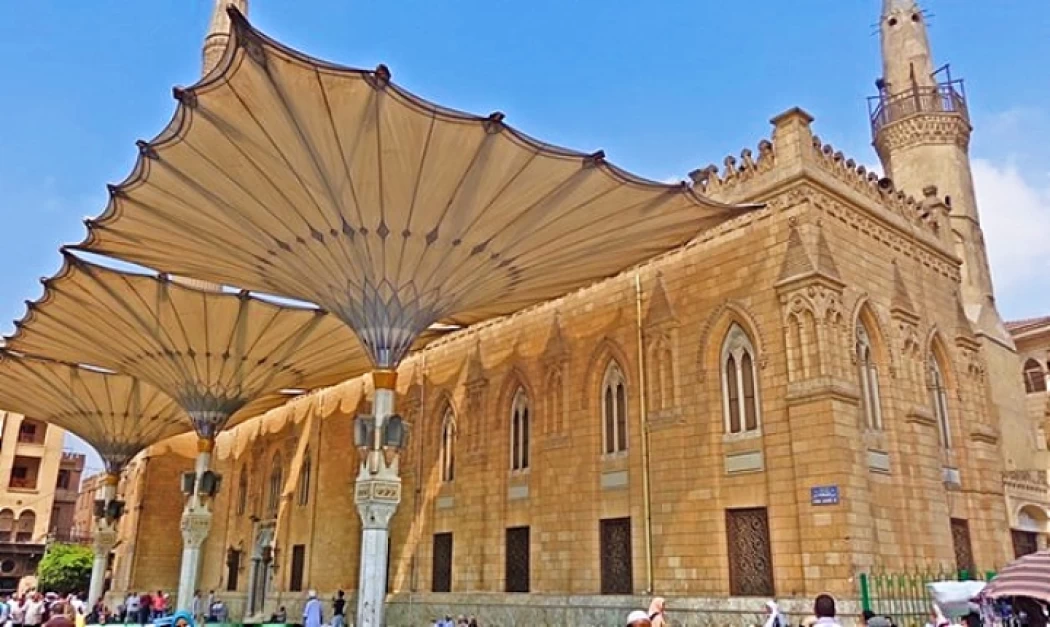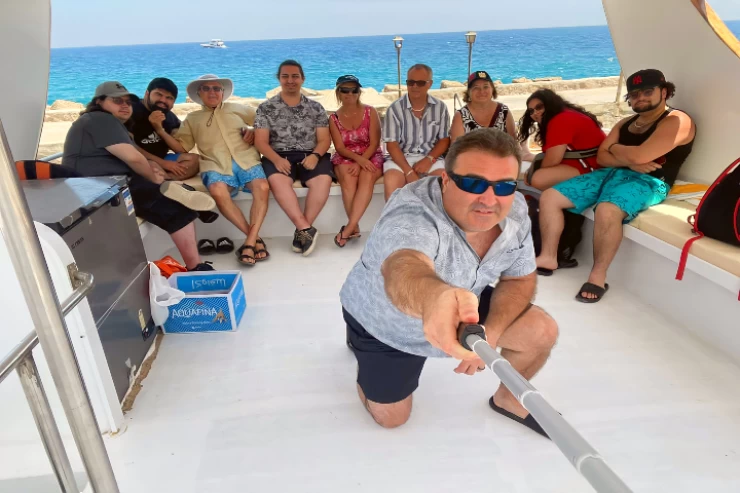
Imam Hussain Mosque in Cairo
Imam Hussain Mosque in Cairo
The Minister of Awqaf thanked the workers and the contractors who completed the renovation works, while pointing out that the mosque will soon be revisited after the renovation work is functionally completed. The mosque was constructed in 549 AH, or 1154 AD, during the Fatimid dynasty under the direction of Vizier Al-Saleh Tala'i. It has three white marble doors that overlook Khan Al-Khalili, as well as a Green Door close to the dome.
The Mosque gets its name from the local belief that the head of Imam Hussein rests within its confines. Many sources narrate that with the onset of the crusades, the fatimid caliph, who was the king of Egypt, became worried, not mainly about Fettered Head’s eventual seizure but also about the damage it would suffer in Ashkelon, Palestine, and so to protect the treasured relic better, he ordered that it be flown out to Egypt. The head was subsequently brought to Egypt where it was interred in the place where the mosque currently stands.
Constructed from crimson stone and embellished in a Gothic style, the Husseini Mosque’s minaret is cylindrical in shape and sectored into two regions resembling most Ottoman minarets. A section for washing, found on the western portion of the mosque, is accessible through three entrances and another one which faces the tribal and the sea side respectively.
The mosque includes five rows of arches mounted on marble columns, and its mihrab is made of fine scraps whose small pieces are made of colored qashani instead of marble, which was made in 1303 AH, and next to it is a wooden pulpit with two doors leading to the dome and a third leading to the remnants room, built in 1311 AH / 1893 AD, where the prophetic remnants were deposited.
There is the biggest chandelier in the Arab world weighing as much as five tons made of crystal and has pillars made of pure gold and pure silver within the mosque.
Hussein is the Prophet Muhammad's grandson, Hussein ibn Ali ibn Abu Talib. He was born in the fourth year of the Hijrah in Medina and grew up in the house of the Prophet, and after the people of Kufa deluded him that they pledged allegiance to the caliphate instead of Yazid ibn Muawiya, he marched to Kufa and at Karbala, the soldiers of Abdullah bin Ziyad attacked and killed him and his family and cut his head on Ashura in 61 AH, and opinions differed about its location and it was said that Hussein's head was buried in Al-Hussein Mausoleum in Cairo after being brought in 1154 AD from Ashkelon.
Hussein is said to have been buried in the following six cities: Cairo, Karbala, Ashkelon, Raqqa, Damascus, and Medina. Only the door known as al-Bab is still standing today; it was constructed in 549 AH to contain the head of Hussein ibn Ali ibn Abi Talib. Only the square base of the minaret above the entrance is still standing; it was constructed in 634 AH, toward the conclusion of the Ayyubid dynasty.
Prince Abdul Rahman Katkhda renovated the top of the minaret, as well as the scene and the dome built over the tomb in 1175 AH, and this dome was decorated from the inside with colorful carvings interspersed with gilding. When Khedive Ismail took over the rule of Egypt, he ordered the renovation and expansion of the mosque, which lasted ten years until it was completed in 1290, except for the minaret, which was completed in 1295 AH.
Among the most important things found in the Husseini scene is a beautiful wooden coffin found in a chamber under the copper cabin in the center of the dome, accessed through two small holes in the floor. In 1939, King Farouk I ordered that the floor of the dome be repaired and furnished with marble, and the Department of Arab Antiquities took this opportunity to verify the existence of this coffin, and when it was found and inspected, it was removed from its place and repaired and then transferred to the House of Arab Antiquities to be displayed there.
This coffin has three sides and is made of teak wood imported from the East Indies. Its face and sides are divided into rectangles surrounded and separated from each other by frames engraved with Kufic and Naskh scripts, and these rectangles are grouped into geometric shapes with fillings decorated with delicate floral motifs that vary in shape and position.















